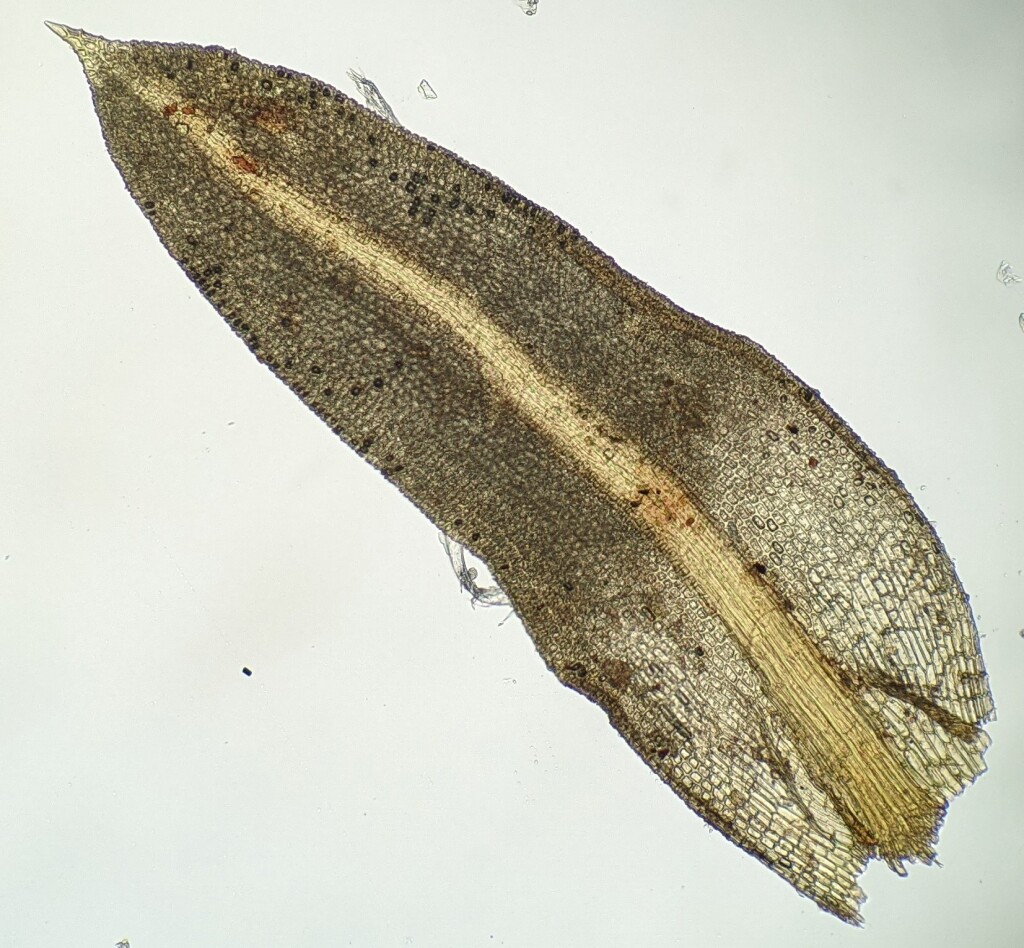Barbula
Dioicous. Asexual reproduction by spherical, unicellular to pluricellular brownish axillary gemmae (not in Victoria). Tufts, turves or cushions on soil or rocks. Stem simple or irregularly branched, with sparse rhizoids to tomentose; central strand present; sclerodermis present; hyalodermis absent. Leaves lingulate to lanceolate, erect- to wide-spreading when moist, contorted and often spiralling around stem when dry; apex rounded, obtuse, acute or acuminate, mucronate; costa excurrent, with a differentiated adaxial epidermis, with elongate adaxial superficial cells, with an adaxial stereid band, with an abaxial stereid band, with a hydroid strand, with elongate abaxial superficial cells, with a weakly differentiated abaxial epidermis; margin entire, recurved or plane; laminal cells in apical half quadrate or hexagonal, pluripapillose; basal laminal cells differentiated equidistantly from base from margin to costa, quadrate to rectangular, smooth, hyaline or sometimes yellow and seriately papillose near costa. Acrocarpous. Perichaetial leaves undifferentiated or strongly differentiated and convolute. Seta reddish brown at least near base. Capsule erect or inclined, straight or slightly curved, ovoid to cylindric, exserted, operculate, annulus weakly to well-differentiated. Calyptra cucullate, smooth, glabrous. Operculum conic or rostrate. Peristome of 32 filaments twisted anticlockwise.
Over 200 species were included in Barbula by Zander (1993), however, the limits of this genus are unresolved and a large number of the species included in Barbula by Zander (1993) are misplaced (see below); four species in Victoria.
Phylogenetic analyses of chloroplast and nuclear DNA sequences have revealed that Barbula in the widely accepted circumscription presented by Zander (1993) prior to the molecular phylogenetic era is composed of multiple lineages, with one lineage containing the type resolved in subfamily Pottoideae, and the remaining lineages belonging to subfamily Trichostomoideae (Werner et al. 2004; Kučera et al. 2013). Kučera et al. (2013) divided the sampled Barbula species into four genera. Two Victorian species, B. unguiculata Hedw. and B. convoluta Hedw. were among the sampled species. Barbula unguiculata is the type of Barbula so was retained in Barbula along with another possibly closely related species, while B. convoluta grouped together with another two species, which together were transferred to the resurrected genus Streblotrichum, which is followed here. Kučera et al. (2013) discussed the possibility of the unsampled Victorian B. calycina Schwägr. also belonging to Streblotrichum because it also has strongly differentiated convolute perichetial leaves like sampled species of Streblotrichum but unlike Barbula unguiculata. However, B. calycina Schwägr and the similar B. subcalycina Müll.Hal. lack other features of the sampled Streblotrichum species and so their correct placement requires confirmation from molecular phylogenetics (Kučera et al. 2013). Until this occurs, these species are retained within Barbula. The remaining Barbula species in Victoria, B. luteola (Mitt.) Paris ex Catches., is also retained within Barbula because it lacks the diagnostic features of the genera segregated from Barbula by Kučera et al. (2013). The description provided pertains to Barbula excluding species transferred to other genera by Kučera et al. (2013).
 Spinning
SpinningKučera, J.; Košnar, J.; Werner, O. (2013). Partial generic revision of Barbula (Musci: Pottiaceae): Re-establishment of Hydrogonium and Streblotrichum, and the new genus Gymnobarbula. Taxon 62: 21–39.
Werner, O.; Ros, R.M.; Cano, M.J.; Guerra, J. (2004). Molecular phylogeny of Pottiaceae (Musci) based on chloroplast rps4 sequence data. Plant Systematics and Evolution 243: 147–164.
Zander, R.H. (1993). Genera of the Pottiaceae: Mosses of harsh environments. Bulletin of the Buffalo Society of Natural Sciences 32: 1–378.

